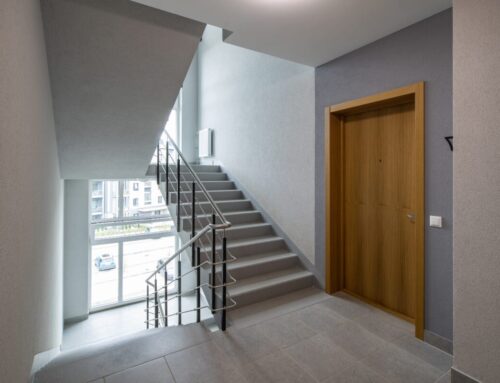 Belinda Thorpe, Managing Director of Residentsline, provides an overview of what you need to know about Major Works and Section 20.
Belinda Thorpe, Managing Director of Residentsline, provides an overview of what you need to know about Major Works and Section 20.
Major works, otherwise known as qualifying works, are any works being done to the building that would cost each tenant over £250. By law, landlords are required to notify tenants if this is the case, and follow a step-by-step procedure or risk being penalised. As stated by LEASE, major works are normally defined as either repairs or replacements to the internal or external building, covering areas such as the roof, window frames, exterior brickwork and communal areas.
It is important to note that whilst major works do include communal areas and works to the interior and exterior building, a tenant’s lease will not normally define major works as any works required for personal premises, i.e. the internal area of each flat, as this is considered to be the responsibility of the tenant.
Are major works included in the service charge?
The funds needed to cover major works are usually recoverable from the leaseholders. Although major works are defined as a service charge, their overall cost will usually be considered as an additional payment on top of the standard service charge leaseholders must pay annually.
This may seem incredibly steep, but often there is no alternative when the property may need urgent or unforeseen work and, provided the landlord follows the correct procedure, tenants will all have an opportunity to have a say in the contractor chosen to complete the job.
Additionally, the tenants may already have funds held in a sinking fund or reserve fund. This is a sum of money put together by each leaseholder and may be used to contribute towards to cost of the works, which may help in alleviating the final cost for tenants.
According to the government, major works generally fall under one of three categories:
1. Exterior decorations: This includes the repair or replacement of joinery, replacing stone sills, painting external woodwork, and metalwork etc.
2. Major repairs: These are described as large “one-off” repairs e.g. replacements of roofs, lifts, doors, windows, heating systems, gutters, bin areas or estate roads etc.
3. Improvement work: These are works which build an amenity which was not there before, i.e. a children’s play area or new concierge system.
Major works and the Landlord and Tenant Act
In 1985, the Landlord and Tenant Act was introduced, alongside the Section 20 clause. This clause was created to protect tenants from paying unnecessarily excessive fees for any major works taking place at their property. To do this, the Act ensures that any landlords who do not follow the S20 consultation procedure are only able to retrieve a capped maximum fee of £250 from each tenant.
However, this does not mean that tenants can be billed £250 for any works without a consultation. By law, the landlord is obliged to notify the tenants of any works beyond a certain cost. According to ARMA, Right to Manage Companies and Residential Management Companies are included under the definition of a ‘landlord’ for the purposes of Section 20.
Section 20 Consultation Procedure
There are three stages to the consultation procedure for Section 20. Each step must be followed by the landlord, RMC or RTM, by law:
1. The Notice of Intention
This notice comes in the form of a letter which details the works proposed by the landlord. It must include a reason behind the work, as well as allowing a 30-day window of opportunity for the tenants to respond to the notice or nominate a contractor they think is suitable.
2. The Statement of Estimates
This notice must be served to leaseholders after an estimated cost of the works has been obtained. This statement must include an estimate from at least one of the tenant nominations, or a contractor who is independent of the landlord. The landlord must also allow another 30-day window to allow tenants to inspect the costs and, if necessary, respond.
3. The Notice of Reasons
Otherwise known as the ‘Notice of Award of Contract’, this should notify the tenants of the landlord’s chosen contractor but this only needs to be sent if the landlord did not choose the cheapest option from the prior notice. It also does not need to be sent if the landlord chose one of the tenant’s nominations. This notice must be sent within 21 days of the landlord entering into a contract with the proposed contractor and must give reasons as to why the landlord chose this option.
Naturally, when the property requires some sort of work to be done, cost is going to be a big factor for both landlord and tenant, yet it is often an unavoidable situation for both. However, having legal steps in place helps to ensure that there are no excessive costs, tenants have a say in the final decision, and that the overall procedure is as smooth as possible.
Residentsline’s sole focus has always been insurance for flats. Today, 22 years on, Residentsline has grown to be recognised as understanding the intricacies, risks and requirements that are unique to the flats market.




Leave A Comment